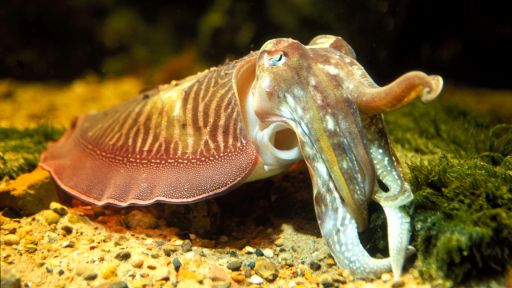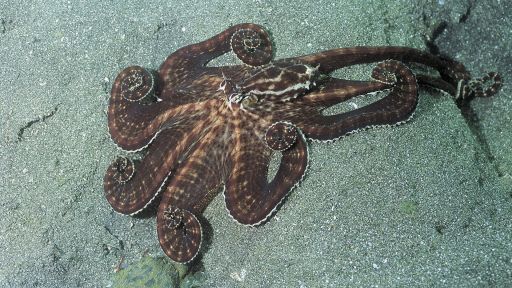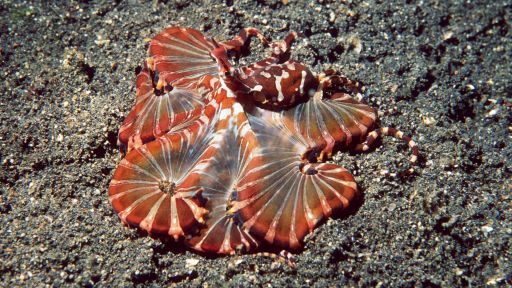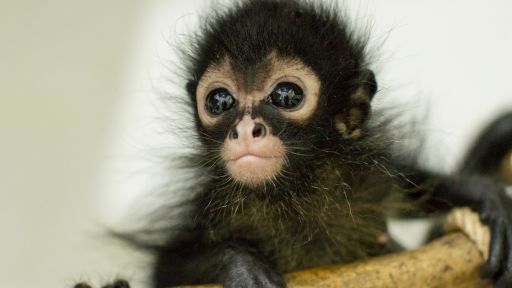Plunging into the ocean world with a deep-sea camera, filmmaker and biologist Mike deGruy brings you face to face with some of the most INCREDIBLE SUCKERS of the ocean: the cephalopoda, or “head-foot.” Octopi, squid, cuttlefish, and other denizens of the deep are shown in their natural habitats, some for the first time ever.
Unlike many other marine species, from bony fish to spiny corals, cephalopods, including squid, octopus, and cuttlefish, have few solid parts. But these invertebrates are far from “spineless” (in the sense of being afraid), as you can see from their aggressive and cunning behaviors on the show. Small squid cleverly disappear into the background and stand their ground as unwitting barracuda pass by, octopi attack their prey from many angles, and the deep sea “vampire squid from hell” displays intimidating rows of spikes on its underside.
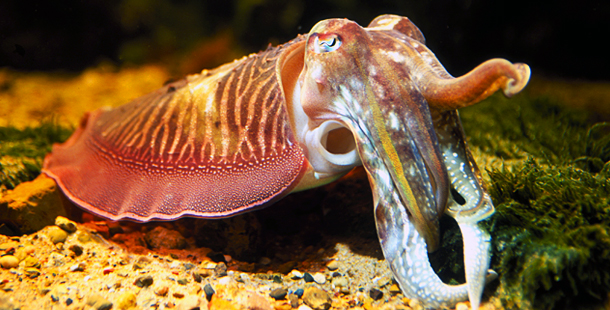 While they have a catalog of defensive maneuvers, cephalopods also use their limber bodies to communicate. Dr. John Forsythe, one of the marine biologists featured on the program, points out that cephalopod species can recognize humans much the same way a household pet will identify its owner. Whether or not these behaviors are present in the largest of cephalopods, the giant squid, is yet to be determined.
While they have a catalog of defensive maneuvers, cephalopods also use their limber bodies to communicate. Dr. John Forsythe, one of the marine biologists featured on the program, points out that cephalopod species can recognize humans much the same way a household pet will identify its owner. Whether or not these behaviors are present in the largest of cephalopods, the giant squid, is yet to be determined.
Little is known about these enormous squid, which cruise at ocean depths greater than one mile. Researchers rely on carcasses found in the stomachs of sperm whales, or washed up on the shore, for the slightest tidbits of information about their diets and habits. Since INCREDIBLE SUCKERS was produced, scientists have embarked on expeditions in search of giant squid, but so far no one has looked one straight in its volleyball-sized eyeball — the largest eye in the animal world.
Dr. Roger Hanlon, who is featured on INCREDIBLE SUCKERS, also studies squid behavior. Hanlon has been following the genealogy of cephalopod populations by fingerprinting the males’ DNA. By comparing the results with those from his studies of mating behavior, he has pieced together a picture of cephalopod courtship rituals and their outcomes.
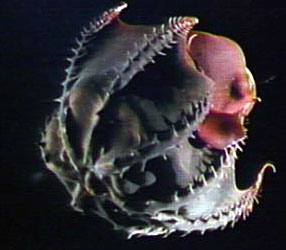 “It’s a complicated mating system in which males have [to use] a lot of tricks to get near the females,” he says. Not only does the female choose with whom to mate, she can also decide whose sperm to use for fertilization and whose to discard — exactly how, scientists are still trying to determine.
“It’s a complicated mating system in which males have [to use] a lot of tricks to get near the females,” he says. Not only does the female choose with whom to mate, she can also decide whose sperm to use for fertilization and whose to discard — exactly how, scientists are still trying to determine.
So, unlike in a lion’s lair, where the females mate only with the best fighters, cephalopod mothers choose a father based on other, unknown factors. “They’ve got to get [in] a lot of gene mixing every year, because they die after spawning,” explains Hanlon. Without gene mixing, the next generation will not be as fit to survive and reproduce. As cephalopods become more popular restaurant menu items, especially in Europe and Japan, this diverse mating scheme is an effective way to keep populations stable.
Calamari, or squid, is a favorite in any Italian restaurant, and Japanese sushi and sashimi feature squid and octopus. Just off the coast of Cape Cod is a squid fishery that sells about $40 million worth of squid per year, reports Hanlon. Fishermen have turned to this market now that the famous George’s Bank to the north and the surrounding cod grounds have been fished out. Fish managers suspect that if the fishing volume continues at its current rate, the squid population could soon disappear, but it will be years before biologists have the data to back up this hunch. In the meantime, people throughout the world will continue to slide cephalopods into their mouths.

